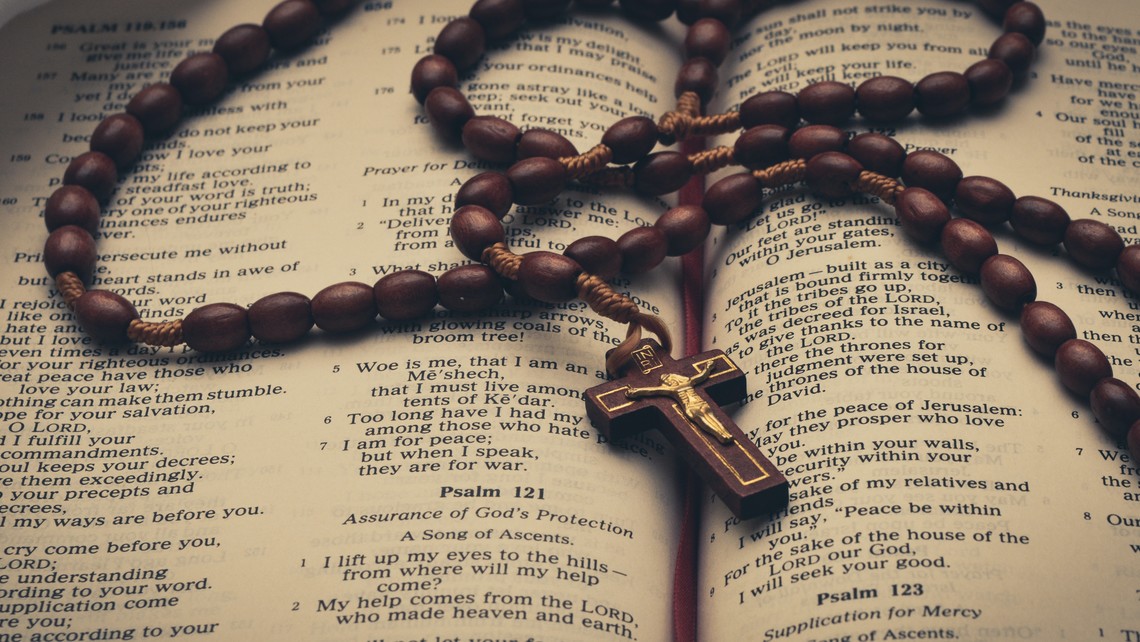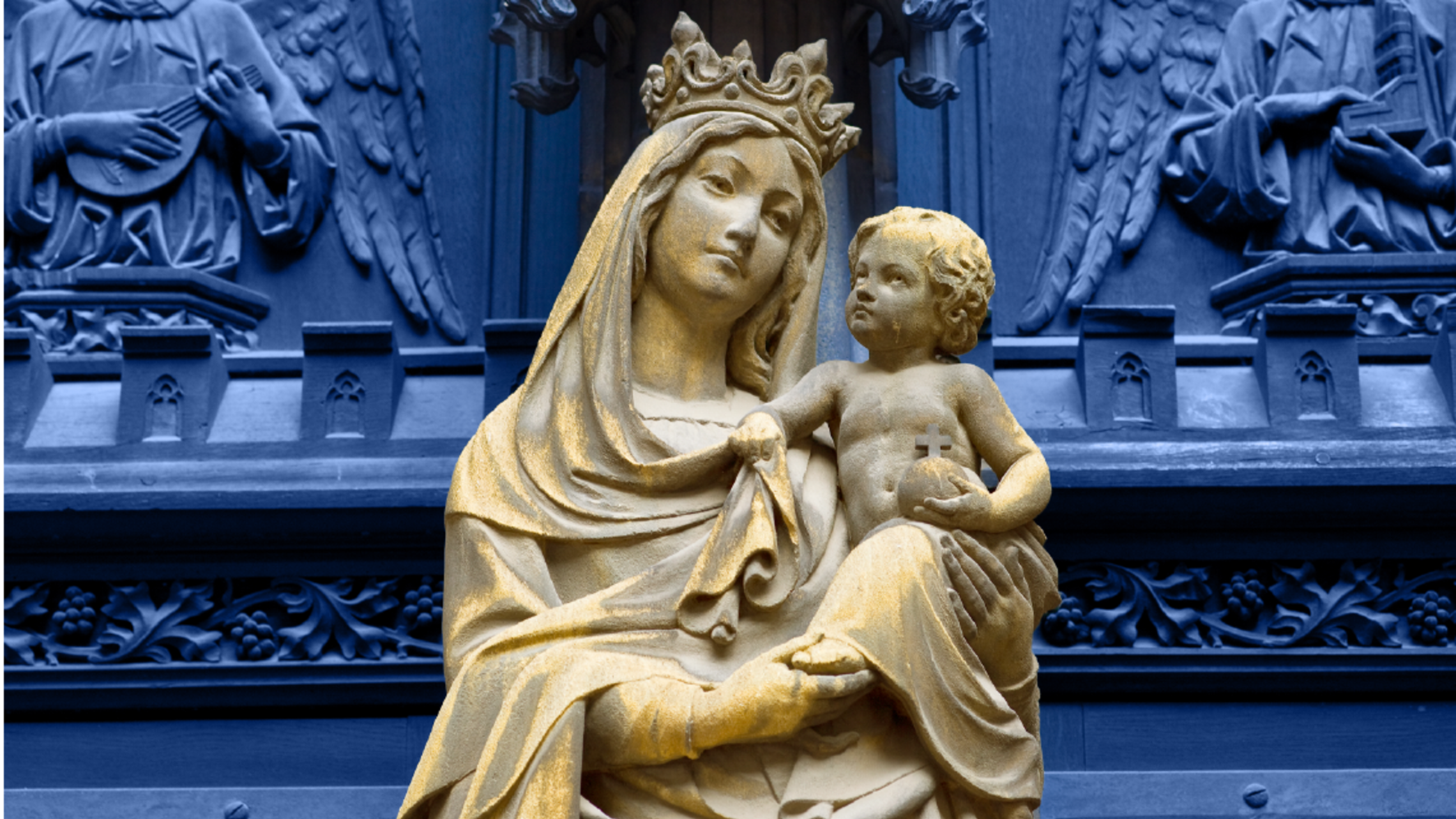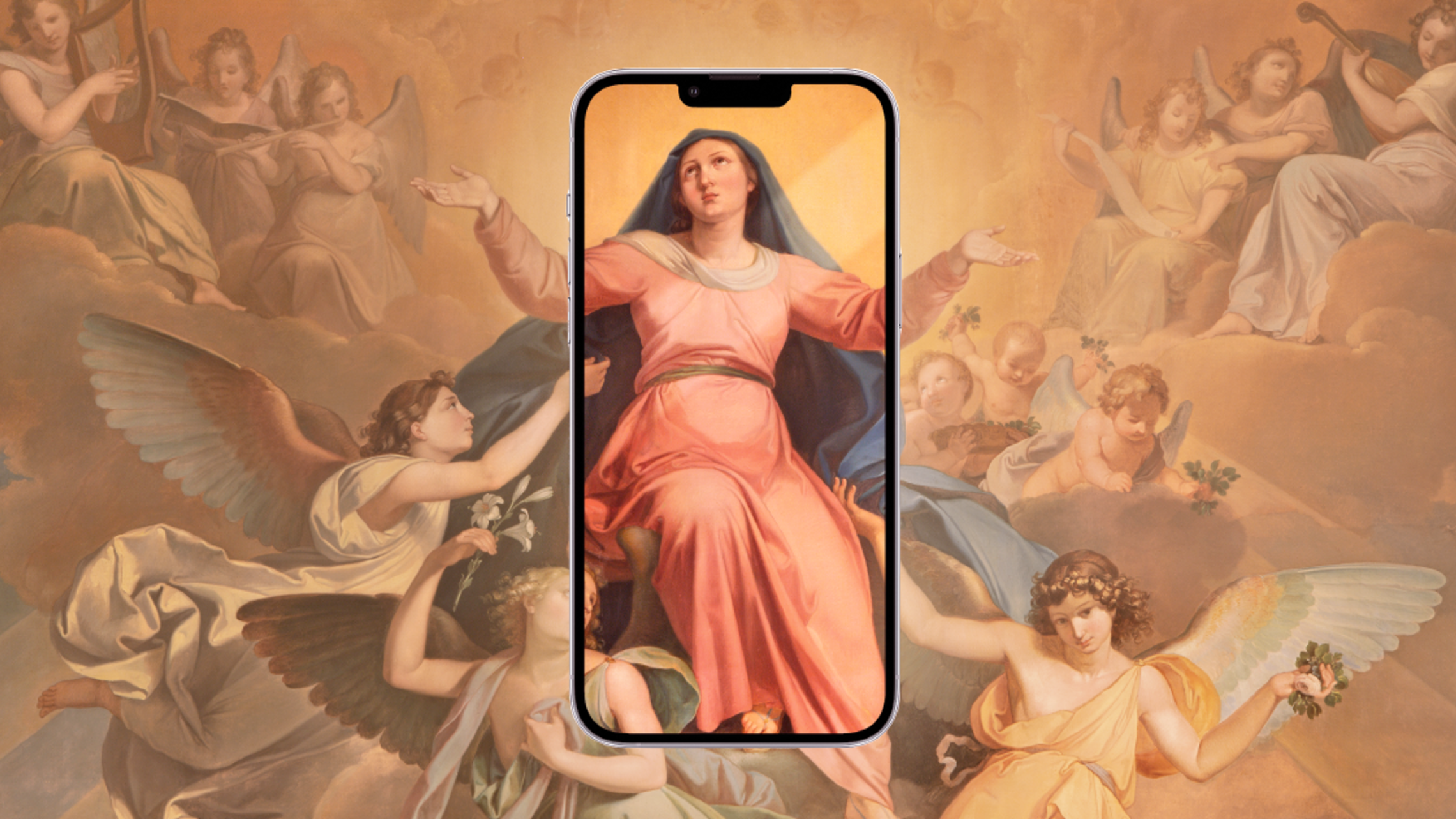
One of the most gifted speakers I’ve ever known was also a high school teacher and a priest.
He could stand in front of a full congregation, and when he spoke he somehow appealed to every person in the audience simultaneously. His homilies reached the theologians and deep-thinkers on their level, but the simplicity at the heart of his message somehow also made complete sense to those without any in-depth theological background.
Even the children were captivated.
He spoke to each and every person, at his or her own level.
Like Fr. Mark’s homilies, the Rosary can reach each of us at our own level. No matter where you are in your Catholic journey, from neophyte to Biblical scholar, this beautiful meditation on the Scriptures is intended for — and gifted to — you. Personally.
Often, we long for the Rosary to calm us, or to comfort us, or to help our mind shift its attention away from daily worries and onto the Mysteries of our salvation. This approach is a wonderful way to pray the Rosary.
However, if you’re someone who appreciates a knowledge of the historical connections between the prayers of the Rosary and the Biblical events affiliated with those prayers, then let’s take a look at how the four Gospels bring the promises of God in the Old Testament full-circle, through the Incarnation, ministry, death, and Resurrection of Jesus.
We’ll dive even deeper into the Scriptural Rosary, the “Bible on Beads,” to discover how each of the Mysteries relates all the way back to events from the Old Testament.
With the exception of the Assumption and the Coronation of Mary, it takes little more than a quick glance at the Mysteries to see their biblical roots in the New Testament. However we don’t refer to the Rosary as the “New Testament on Beads,” but the Bible on beads.
Here’s why.
Jesus, the Word-Made-Flesh, is how God fulfills His promises to mankind. So, a fuller understanding of the person of Jesus demands an understanding of the promises God has made.
There’s an ancient principle for understanding Scripture called typology.
What is "typology"?
Simply put, typology is the study of type (promise) and antitype (fulfillment).
We discover God’s promises to His people throughout the Old Testament, and then see how those promises are fulfilled by Jesus (and His Church) in the New Testament!
As the Catechism of the Catholic Church explains, we want to “…read the Old Testament in the light of Christ crucified and risen” (129).
This discovery requires actually opening up the Old Testament and unpacking “Salvation History,” to discover God’s saving actions and interventions — particularly through a series of covenants.
Adam represents God’s intention to be in a covenant relationship with all of mankind from the beginning. But man’s decision to “eat the fruit” thwarted that plan.
God restores His plan gradually through the Noahic, Abrahamic, Mosaic, and Davidic Covenants, and then fulfills it in the New Covenant in the person of Jesus and the Catholic Church He established.
Each of these covenants can be broken down into their two parts - promise and fulfillment.
Adamic Covenant
Through this covenant, mercy triumphs over judgment — and there are no conditions upon which the covenant is given, other than that we must have faith. This mercy is an act of love and grace from God.
Old Testament — Because of Adam’s sin, God curses mankind, the animals, and the earth, so they will yearn for His redemption. In Genesis 3:15, God says to the evil spirit, “And I will put enmity between you and the woman, and between your offspring and hers; he will crush your head, and you will strike his heel.” He will crush your head, Satan. So, there is hope!
New Testament — To attain victory over Satan and death, to undo what has been done by Adam’s sin, God Himself intervenes personally through Jesus , to recreate Adam’s story — but with different results. Jesus becomes the Last Adam, devoid of sin, obedient to the Father, and the only one who can possibly redeem us. Says Romans 16:20, “And the God of peace will crush Satan under your feet shortly. The grace of our Lord Jesus Christ be with you. Amen.”
Noahic Covenant
This is a covenant of re-creation.
With this covenant, God shows His restraint. He gives us the rainbow as a sign of His promise.
Old Testament — Instead of blotting out the entire human race, God protects Noah and all the animals in the Ark, delegating them to repopulate the world with a people who will uphold the covenant. In Genesis 8:21, God promises that He will never again destroy all living creatures.
New Testament — Even after Noah’s flood, the world still needs saving. While the wood of Noah’s ark has saved God’s people from a flood, the wood of Jesus’ cross has ultimately made possible the opening of the gate of life for us through Jesus’ sacrifice upon it, and has thus saved our souls.
The “flood” of water and blood from Jesus’ side have become symbols for Baptism and the Holy Eucharist. Jesus is the New Noah; the Baptism of Jesus in the Jordan River, related in all four Gospels, and His crucifixion, demonstrate the fulfillment of the “baptism of Noah.” 1 Pet. 3:21 explains: “[B]aptism, which this [the flood] prefigured, now saves you — not as a removal of dirt from the body, but as an appeal to God for a good conscience, through the Resurrection of Jesus Christ.”
Abrahamic Covenant
This is God’s covenant of restoration.
Old Testament — God chooses one man through whom He will restore a people to Himself. He promises Abraham land (Israel), a people (the Israelites [descendents of Jacob-Israel], son of Isaac, son of Abraham), and a blessing (to be God’s chosen people).
“Go from your country, your people and your father's household to the land I will show you. I will make you into a great nation, and I will bless you; I will make your name great, and you will be a blessing. I will bless those who bless you, and whoever curses you I will curse; and all peoples on earth will be blessed through you” (Genesis 12:1-3).
New Testament — God makes good on His promise from Genesis 12:1-3 when He curses the Egyptians and brings the Israelites safely out of Egypt. As for His final promise, God sends Abraham’s people His only Son, so that they may receive the greatest blessing: to know God: “’Your father Abraham rejoiced that he would see my day. He saw it and was glad.’ So the Jews said to him, ‘You are not yet fifty years old, and have you seen Abraham?’ Jesus said to them, ‘Truly, truly, I say to you, before Abraham was, I am’” (John 8:56-58).
Mosaic Covenant
This covenant is about redemption.
Old Testament — Israel has grown into a multitude of people. God brings them out of Egypt to Mt. Sinai to form a covenant relationship with them, giving instruction in righteousness according to God’s standards, thus revealing man’s sinful ways and making it clear that the ultimate sacrifice must be made.
In Leviticus 26, God instructs His people to have no other gods, keep the sabbath, and keep His laws and commands. And in Leviticus 26:45, God says, “But for their sake I will remember the covenant of their ancestors, whom I brought out of the land of Egypt in the sight of the nations, that I might be their God: I am the Lord.”
New Testament — Christ fulfills the sacrifice that was necessary for the redemption of mankind. Matthew’s Gospel presents Jesus as the new Moses: The Sermon on the Mount, Matthew 5-7, establishes Jesus as giving a new set of commandments (the Beatitudes) and a deepening of the Law of Moses. “Do not think that I have come to abolish the Law or the Prophets; I have not come to abolish them but to fulfill them” (Matthew 5:17).
Davidic Covenant
This is a covenant of restoration.
Old Testament — After 500 years of judges administering God’s Law, followed by a king (Saul) who refused to keep God’s Law, God appoints a king named David, a man after His own heart. In 2 Samuel 7 and 2 Samuel 12-16, God promises He will give David’s son, Solomon, three things: 1) the throne, 2) a house, and 3) a kingdom forever. This covenant leads up to the revealing of David’s greater son through his royal line, Jesus Christ.
New Testament — Jesus is the restorer and fulfillment of the Davidic Kingdom. Just as Luke’s genealogy traces Jesus’ lineage to Adam, so Matthew’s genealogy traces Jesus’ lineage back to Abraham through King David, showing Him as the heir to David’s throne: “Thus there were fourteen generations in all from Abraham to David, fourteen from David to the exile in Babylon, and fourteen from the exile to the Messiah” (Matthew 1:17).
New Covenant
This New Covenant is written on our hearts, and made possible only by our faith in Jesus Christ.
Old Testament – After David, and after the rule of many evil kings, God sends Israel into exile in Babylon. But before He does, He promises in Jeremiah 31:27-34 that He will give them a New Covenant, and bring them back some day. One day, they will be sons with new hearts. Jeremiah 31:34 includes the reassuring words: “They will no longer teach their friends and relatives, ‘Know the LORD!” Everyone, from least to greatest, shall know me… for I will forgive their iniquity and no longer remember their sin.”
New Testament — Jesus speaks of this New Covenant at the Last Supper. As He takes and blesses the cup of wine, Jesus says, “This cup is the new covenant in my blood, which is poured out for you” (Luke 22:20). Jesus announces that, through His death and Resurrection, the sins of humanity will be forgiven. God’s purpose from the very beginning, for His children to live forever in communion with Him, will be accomplished once and for all.
God keeps His promises
God has shown us that He is our Father who has never let us down. Likewise, Mary is the perfect mother on whom we can always rely. The Rosary prayer is a beautiful way to meditate simultaneously on both of these constant, steadfast, parental figures in our lives.
Over the coming months, we’ll go through each set of Mysteries and reflect on them in light of their Old Testament background.
If you’d like additional resources for learning more about the Old Testament background of the Mysteries of the Rosary, I recommend checking out A Father Who Keeps His Promises by Scott Hahn, Bible Basics for Catholics by John Bergsma, and Praying the Rosary Like Never Before and The New Rosary in Scripture by Edward Sri.
If you’re committing to praying the Rosary on a daily basis, please let us know.
Follow us on Facebook and Instagram, and join the growing community of others who are committing to continue to pray the Rosary. Share what you’re doing on our Facebook page, and let us know if we’ve missed anything. It is our sincere hope that our community will inspire you to continue this extremely fruitful practice.



